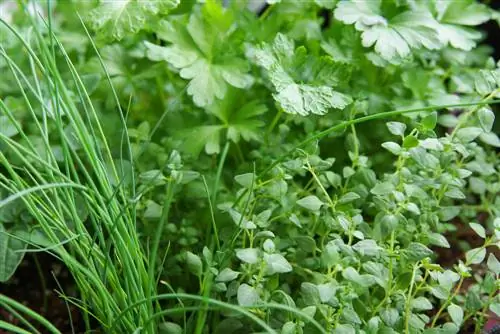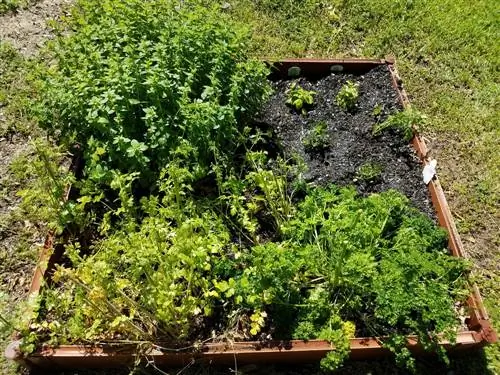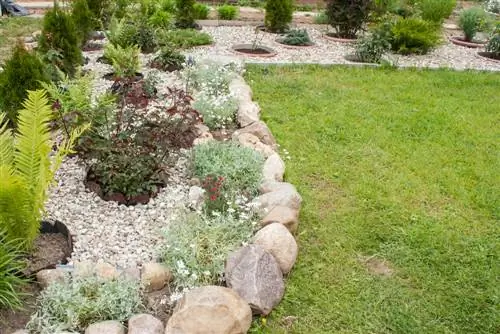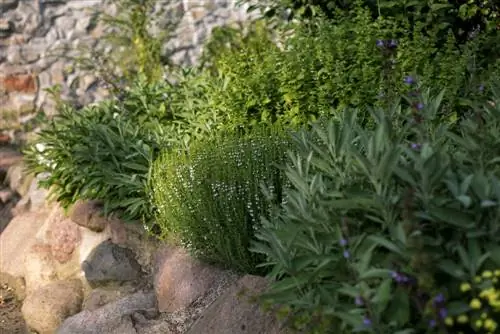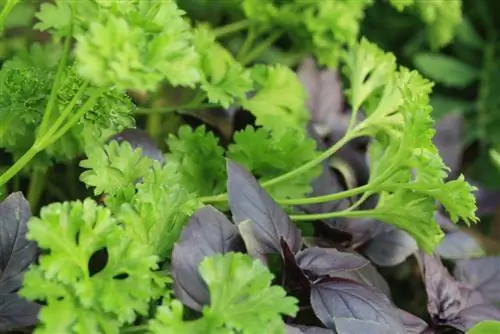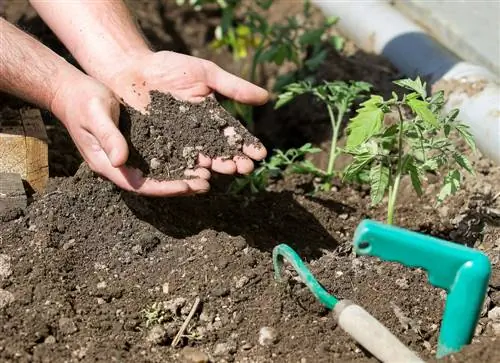- Author admin [email protected].
- Public 2023-12-16 16:46.
- Last modified 2025-01-23 11:21.
Creating a herb bed is fun and largely independent of buying herbs in stores. But which soil do the aromatic kitchen refiners need? Here is an overview of the most important rules.
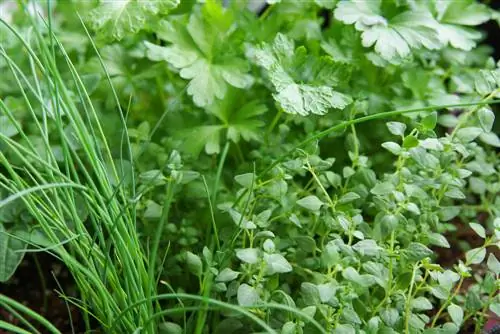
Which soil is suitable for a herb bed?
Which soil is suitable for a herb bed? There are two main groups of herbs: those that are nutrient-hungry (e.g. chives, parsley) and those that are undemanding to the soil (e.g. B. rosemary, thyme). The former require a humus-rich, nutrient-rich soil, while the latter prefer a lean, well-drained soil with a high sand content.
The always valid basic rule
What applies to other plants is no different for herbs: other varieties need different soil. However, herbs make it comparatively easy for the hobby gardener. They can be roughly divided into two groups:
- mainly local, nutrient-hungry herbs
- southern, soil-technically undemanding herbs
The first group mainly includes varieties that are often used in our culture as classic salad or soup herbs, such as chives, parsley, tarragon, lovage or borage.
These herbs like humus-rich, nutrient-rich soil, preferably with a good proportion of compost. However, it should still be permeable, as herbs generally do not tolerate waterlogging well. Expanded clay can make the substrate more permeable.
The frugal herbs include the typical varieties of Mediterranean cuisine such as rosemary, thyme, oregano or lavender.
These varieties like a poor, very well-drained soil with a high sand content. You can also add some crushed lime, especially with lavender.

